Samsung S95D is definitely our favourite among the televisions from this brand for 2024. We were impressed by its innovative matte panel, which sets it apart from the competition. Its brightness is astonishing. This is one of the highest values in the OLED segment. As a result, it performs excellently in both dimly lit rooms and full sunlight. Motion fluidity in this model is outstanding. When watching dynamic content such as sports or games, every fast scene is rendered with precision and without distortion. For us, gaming enthusiasts, the S95D offers a lot. It is equipped with four HDMI 2.1 ports. They support all the features available on the latest consoles. Moreover, the ability to use the Xbox app for cloud gaming removes the need to have a physical console! In everyday use, the television does not disappoint either. The Tizen system provides an intuitive interface and quick access to favourite streaming services. Integration with other devices, not just those from Samsung, is possible thanks to the SmartThings app. We can control smart devices such as lighting or monitoring from the television. This is incredibly convenient. Additionally, the S95D offers a Multi View function, allowing you to watch two different programmes simultaneously. The eco-friendly solar remote is another advantage. It supports multiple devices. This means we can manage everything from one place. For those of us who dislike having numerous remotes on the table, this is truly a significant benefit. The Solar Cell remote can take control of devices such as a decoder, home theatre, console, and many more. Support for AirPlay and Bluetooth enables hassle-free content streaming and accessory connections. We cannot overlook the design of the S95D. Its slim build and innovative One Connect solution make a striking impression. The only drawback we've noticed is a feature of the matte panel. During the day, it may somewhat dull the colours. Nevertheless, we believe that the Samsung S95D is a television full of advanced features and technology. It's perfect for those who desire the highest quality entertainment in their home. This is a genuinely outstanding device that undoubtedly deserves to be called one of the best televisions of 2024.
- Matching (Score)
- Our verdict
- TV appearance
- Where to buy
- Contrast and black detail
- HDR effect quality
- Factory color reproduction
- Color reproduction after calibration
- Smoothness of tonal transitions
- Image scaling and smoothness of tonal transitions
- Blur and motion smoothness
- Console compatibility and gaming features
- Input lag
- Compatibility with PC
- Viewing angles
- TV efficiency during daytime
- Details about the matrix
- TV features
- Apps
- Playing files from USB
- Sound
Samsung OLED S95D vs LG OLED C5
Direct compare
Check the best price offer:
LG OLED C5S95D
C5 / C54 / C5ELB / C51

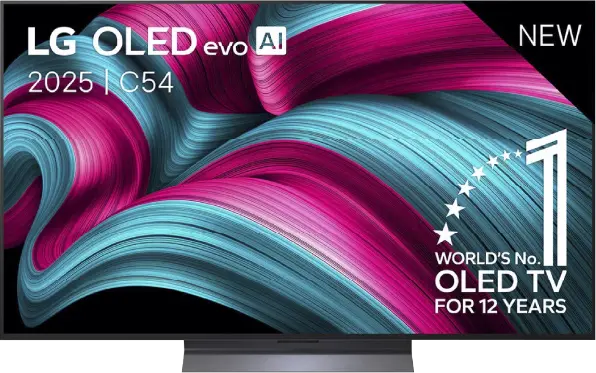
Panel type: QD-OLED
Resolution: 3840x2160
System: Tizen
Model year: 2024
Complete the survey to find out the result

Panel type: WRGB OLED
Resolution: 3840x2160
System: WebOS
Model year: 2025
Complete the survey to find out the result

Overall rating
8.5
8.2
Movies and series in UHD quality
8.9
8.5
Classic TV, YouTube
9.2
8.9
Sports broadcasts (TV and apps)
8.9
8.6
Gaming on console
9.8
9.4
TV as a computer monitor
8.6
8.6
Watching in bright light
6.2
6.2
Utility functions
7.9
7.9
Apps
8.7
9.1
Sound quality
7.9
7.2
Complete the survey to find out what fits your preferences
Advantages
Remarkable depth of image and black (OLED)
Very good HDR effect
Excellent brightness
Saturated colours - high coverage of a wide colour gamut Bt.2022
Best viewing angles on the market
Matte panel
Super slim design (Innovative One Connect solution)
Excellent black levels and infinite contrast thanks to the OLED panel
Above-average brightness (for an OLED TV)
Nearly reference image quality after calibration
A full suite of features for gamers: 4xHDMI 2.1, low input lag, HGiG, VRR and more
Very good motion smoothness – 144 Hz OLED panel
Intuitive and modern WebOS system
Convenient Magic remote control with gyroscope
Disadvantages
Colours during the day may be less intense due to the matte screen
Lack of support for DTS audio tracks (this may be an issue with an external player)
Different versions of the remote in derivative models – it's hard to predict which version we will get
Average reflection suppression – it can be distracting in very bright light
No support for DTS:X – an external amplifier is required for full compatibility with this format
Our verdict
LG C5 is a very successful continuation and, in some aspects, even a step forward compared to last year's model C4. The biggest change is the significantly higher brightness – for the first time in the history of the C series, the barrier of 1000 nits has been exceeded, which greatly improves the quality of the HDR effect. Both films and series look more dynamic as a result, and bright scenes finally have the proper "glow". After calibration, the picture quality is nearly reference-level, and one could get the impression that we are dealing with equipment that is much more expensive than its price suggests. C5 is also one of the best choices for gamers – four full HDMI 2.1 ports, low input lag, support for VRR, G-Sync, and correctly implemented HGiG. Additionally, the 144 Hz panel makes not only gaming but also watching sports pure pleasure. The convenient WebOS system and the Magic remote with cursor control function also deserve praise – everything works smoothly and intuitively. This is a television that you simply want to use.
However, there were a few minor reservations. This year, LG has decided to abandon support for DTS codecs, which may be problematic for those using physical media and collections of Blu-ray films. It is also worth noting the confusion regarding the different versions of the remote – depending on the model designation, we may receive a completely different remote than the one we held during our tests. Despite these few comments, LG C5 is a television that makes an excellent impression in almost every regard. Brightness, colours, gaming features, smoothness of the image, and overall build quality make it one of the best OLEDs in its class.
TV appearance



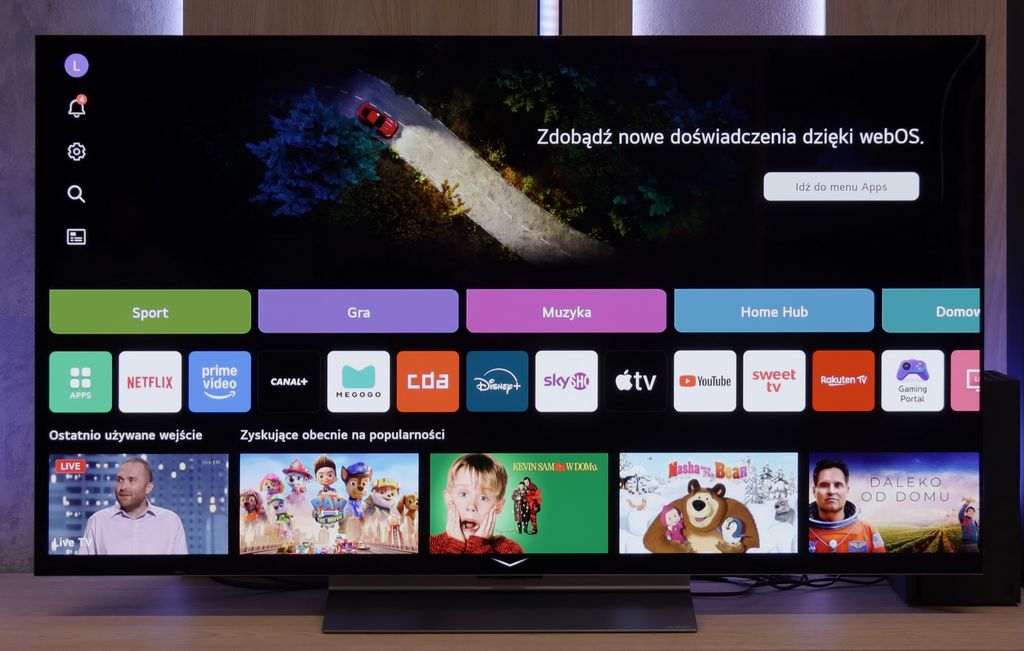
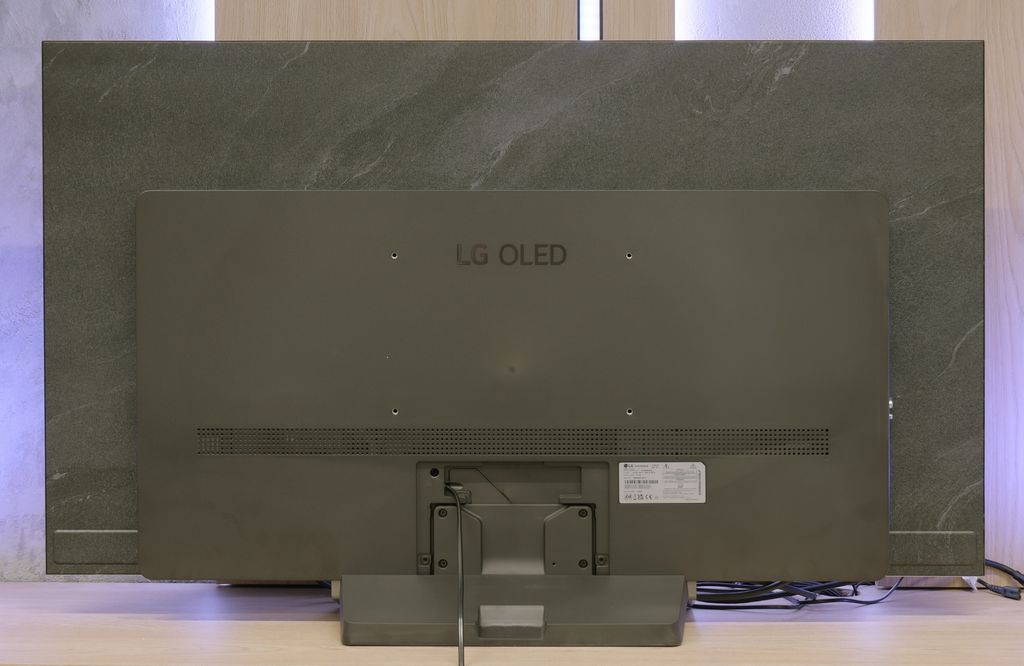
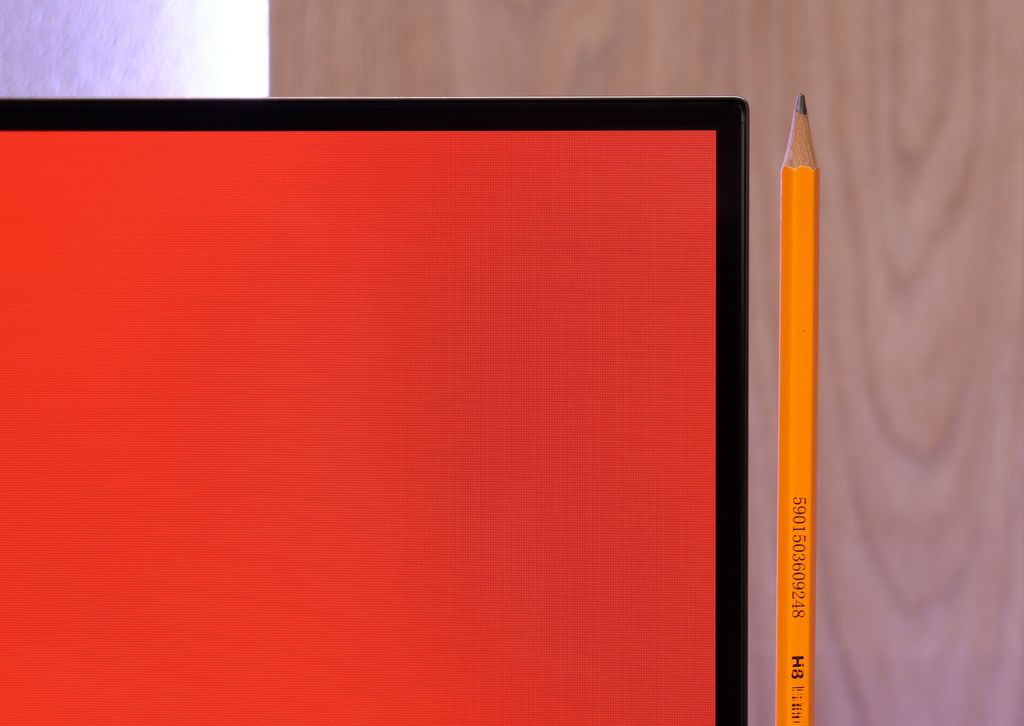
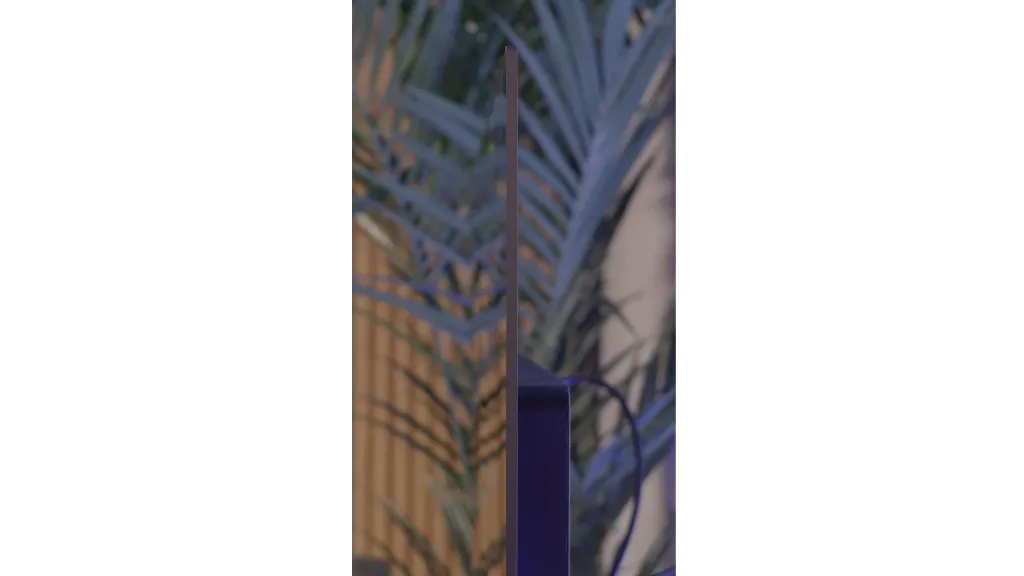
Contrast and black detail
10/10
10/10
Contrast:

Result
∞:1

Result
∞:1

Result
∞:1

Result
∞:1

Result
∞:1

Result
∞:1

Result
∞:1

Result
∞:1

Result
∞:1

Result
∞:1
Halo effect and black detail visibility:

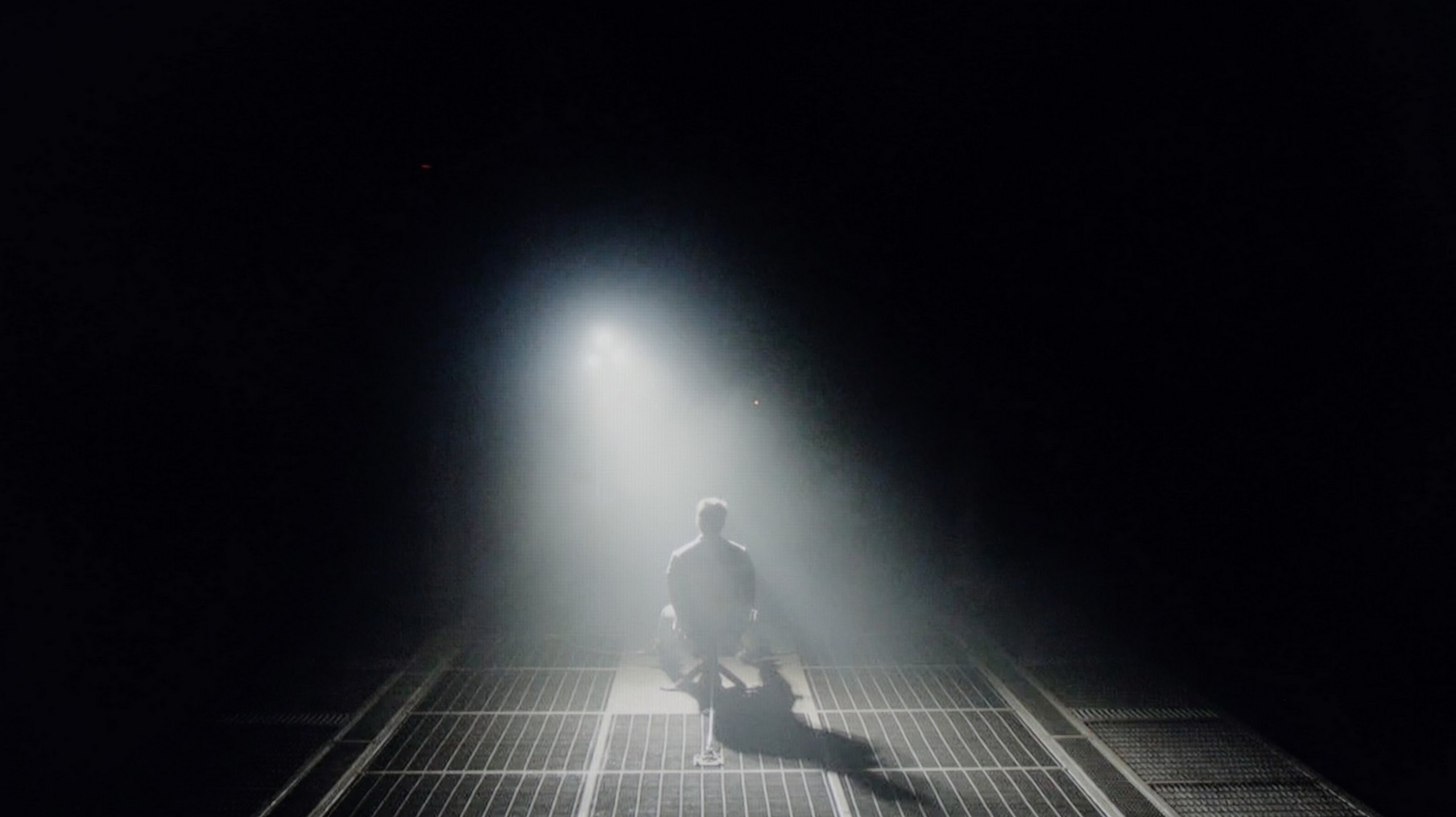
Samsung S95D with QD-OLED technology impresses with perfect black, which it owes to self-emissive OLED diodes working in conjunction with a layer of quantum dots. Each pixel can turn off independently, allowing the screen to achieve absolute black without the slightest light leakage. The effect? Infinite contrast, where bright objects on a dark background shine clearly, and details in the shadows are reproduced with great accuracy.
Compared to traditional LCD televisions or even other OLEDs, S95D stands out with incredible image uniformity and depth of black. This makes night viewings take on a cinematic atmosphere, and the image appears almost three-dimensional. An ideal choice for those who expect the highest quality and complete immersion in the content being watched.
In the category of black and contrast, the LG C5 fits perfectly into what we have come to expect from OLED televisions – it is simply ideal. Thanks to the use of an organic matrix (WOLED), each pixel shines independently, which results in infinite contrast and perfect black. There are no halos, streaks, or other typical LCD television artifacts here. Details in bright parts of the image are perfectly visible, and watching in a darkened room is pure pleasure. If someone is looking for a television for evening screenings with great contrast – the C5 is a very strong contender.
HDR effect quality
7.8/10
7.2/10
Luminance measurements in HDR:

Result
1400 nit

Result
1521 nit

Result
1560 nit

Result
1385 nit

Result
804 nit

Result
1079 nit

Result
1059 nit

Result
1120 nit

Result
1094 nit

Result
707 nit
Scene from the movie “Pan” (about 2800 nits)


Scene from the movie “Billy Lynn” (about 1100 nits)


Static HDR10


Dynamic: HDR10+
Dynamic: Dolby Vision


HDR luminance chart:
LG OLED C5
HDR luminance
Luminance of RGB colors
Samsung OLED S95D
HDR luminance
Samsung S95D offers excellent HDR performance, delivering consistent effects across all scenes exceeding values of 1500 nits, except for the fifth, where brightness drops to 800 nits. Despite this, the television maintains a high level of picture quality. A significant advantage of QD-OLED technology is its ability to maintain high brightness even in the smallest elements against a black background, which is rare in LCD and mini LED televisions. As a result, every scene dazzles with strong lighting effects, regardless of the size of the illuminated area. Only in the brightest scenes with large light areas does brightness slightly drop, which is typical even for standard OLEDs produced by LG. Additionally, the quantum dot coating has achieved an unprecedented high coverage of the BT.2020 colour gamut at 88%.
LG C5 finally does what we have been waiting for years in the C series – it exceeds 1000 nits of brightness! This is a significant change compared to previous models in the series, and it is very important – because most HDR content on streaming platforms is now created around such luminance. The image finally has the proper "shine," and the details in the highlights look as they should even without the use of dynamic metadata. However, there are scenes where the C5, like most OLED televisions, has certain issues. Especially when the screen needs to light up completely. In our test sequences, such as the bright shot from the film The Meg, the brightness clearly drops. Don't get us wrong, this result is not bad; it's more a reminder that OLED technology still has its limitations. Year by year they are becoming smaller, but still.
As for the colours? They are very good. Although the C5 does not match OLEDs with QD-OLED or Tandem RGB panels, the DCI-P3 coverage of 97% and 73% BT.2020 will satisfy even the more demanding viewers. The colours are saturated, natural, and very consistent in HDR material.
Factory color reproduction
7.5/10
8.2/10


Factory Mode
After calibration


Factory Mode
After calibration
On the Samsung S95D, the mode that best reproduces colours is the Filmmaker mode. We conduct all our tests in this mode. Although initially, the picture in this mode may appear slightly warmer to the viewer, it provides significantly more detail compared to the standard or dynamic mode, which is always oversaturated and artificial. The Filmmaker mode is therefore the most closely aligned with the vision of filmmakers and ideal for watching high-quality content. It is worth noting, however, that the factory settings are not perfect, despite dealing with premium segment equipment. The image may contain certain errors that affect the overall quality of the displayed scenes. An example is drops in red colour in the white balance, both in HD and HDR content. Colour Checker tests showed that the hues lean towards cooler tones. The image is dominated by blue hues, and the entire colour spectrum is distorted. As can be seen in the picture below, the little boy from the film appears in cooler tones, making him look less natural. When it comes to the brightness characteristics for HD content, it is quite accurate, although there are minor errors. The biggest problem arises when displaying 4K HDR content. The EOTF curve, which seems appropriate at first glance in test patterns, shows that the television sometimes "messes" with the image in real film scenes. This causes the picture to be slightly brightened in some scenes and darkened in others.
Samsung S95D offers quite good factory colour reproduction, but it has some shortcomings that may require calibration to fully utilise the potential of this television. The process is recommended to achieve the most natural and immersive image possible.
LG C5, like other televisions we have tested, has been checked in the best possible factory mode – which remains the Filmmaker Mode. And here we have good news: in SDR materials, LG has once again done a solid job. The white balance and colour reproduction right out of the box are at a very high level. Most errors – both in balance and in the colour test (Colour Checker) – did not exceed a ΔE value of 3, which is the threshold above which differences become visible to the naked eye. Such factory settings would be desirable in a significantly larger number of televisions!
However, the situation looks different for HDR content, which is precisely what the C series was created for. Here, the C5 performs somewhat worse. The excessive presence of blue in the white balance causes the image to appear distinctly cooler – which affects, for instance, unnaturally pale skin tones or a slightly shifted tone of the entire scene. Fortunately, LG provides very precise calibration tools, and we – as always – made use of them.
Color reproduction after calibration
9/10
9.4/10




How much can the picture quality of a television change after calibration? After performing calibration on the Samsung S95D, the white balance was significantly improved, eliminating any major errors, which allowed for a more natural and harmonious colour reproduction. In the case of 4K content, there are only minor imperfections, which do not affect the overall picture quality. Thanks to calibration, viewers can now enjoy more balanced tones, allowing for a better representation of the filmmakers' intentions. The contrast has also improved, and the gamma shows even better results. This means that the differences between the light and dark areas of the image have become more pronounced, translating into better depth and detail in scenes. As a result, shadows gained more detail, and bright areas are no longer overwhelming, providing a more realistic visual experience. However, it should be noted that the EOTF curve is slightly below the expected level, which may affect how the television handles dynamic scenes. Nonetheless, after calibration, the overall picture quality has significantly improved, and viewers can now enjoy a visual experience that is more in line with the filmmakers' intentions. The television handles subtle tonal transitions and contrast better, making it more suitable for watching films and high-definition programmes. Ultimately, the picture after calibration is closely aligned with reference quality, making the visual experience even more satisfying.
We must honestly admit – in the case of the LG C5, very little was needed to achieve nearly perfect picture quality. After calibrating, we managed to reach compatibility with reference screens at a level that impresses even when compared to significantly more expensive models. The image after our adjustment looks exactly as filmmakers and series creators would want it – without colour distortions, with natural depth and subtle texture. LG has done a great job this year regarding factory settings and calibration potential. Chapeau bas!
Smoothness of tonal transitions
8.5/10
8.2/10












The tonal gradation on the Samsung S95D television is outstanding. Even in the most demanding scenes of the tested films, the television performs excellently. Any issues with smoothing tonal transitions are minimal and almost imperceptible. The average viewer is unlikely to notice them, which contributes to the overall positive visual experience during everyday use. It is also worth mentioning that the use of a QD-OLED panel allows for better results than those achieved with the best panels produced by LG - WOLED.
WOLED televisions have not been known for their perfect fluidity of tonal transitions until now. It has often been noticeable that there were subtle bands between colours – particularly in the darker parts of the image – which gave the impression that the hues did not transition smoothly, but rather "stair-stepped" slightly. This year, LG has made significant progress. In the C5 model, this issue has largely been eliminated. Indeed, in very dark scenes, subtle boundaries between colours can still be seen, but they are non-intrusive enough that hardly anyone except for more discerning viewers will notice them. For most users, the fluidity of tonal transitions in the C5 will simply be impeccable.
Image scaling and smoothness of tonal transitions
7.5/10
7.8/10
Smooth transition function

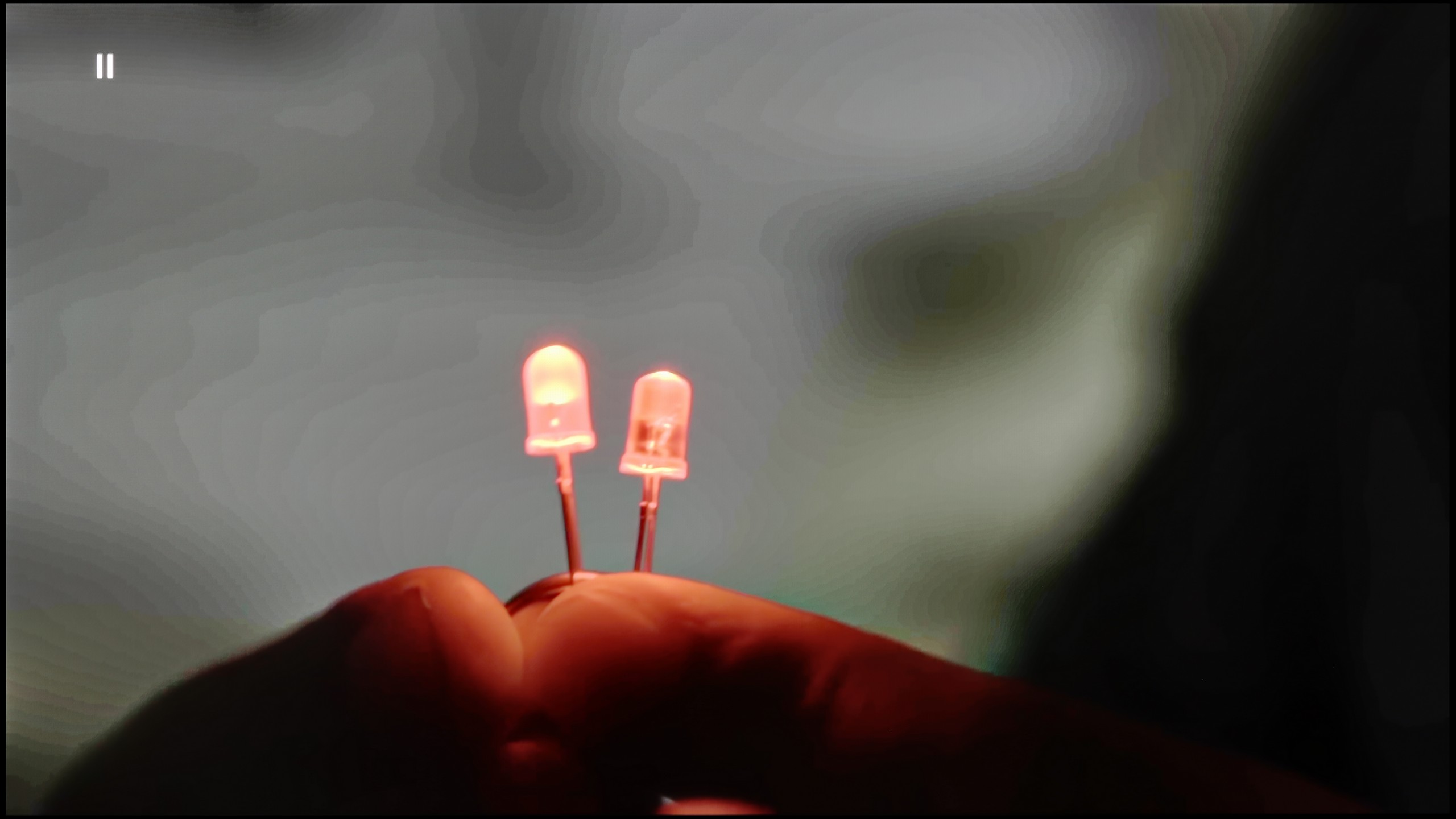
Image without overscan on the SD signal


How does the television handle tonal transitions in lower-quality materials? Generally speaking, the S95D performs exceptionally well. On the screen with the light bulb, there are virtually no transitions between shades of grey, making it one of the best televisions we have tested in this regard.
Regarding digital processing, the entire image — from branches to model figures — has been well rendered, without any jagged edges or heavily visible contours. However, we must draw attention to one issue: the image is slightly cropped. Nevertheless, the television performs excellently, and details in lower-quality materials are still noticeable and well-defined.
LG C5 handles lower quality materials really very well. One of the main problems older WOLEDs faced was posterisation – that is, unwanted “stair stepping” in colour transitions. The C5 utilises a system feature that smoothens these transitions, which works surprisingly effectively. The banding effect is nearly completely eliminated, and the picture gains in coherence. Compared to last year's model, we have the impression that this feature works slightly less effectively – but the good news is that it does not undermine the structure of the image. Film grain, textures, and details remain on the screen – nothing is unnaturally smoothed out.
The C5 also excels at enhancing the quality of older recordings. Thanks to the α9 Gen6 processor (8th gen), the "scaling to 4K" performs really solidly. The image is clear, the details are sharp, and the only minor downside might be slightly noticeable edge sharpening on some borders. However, there is no issue with overscan here – the image is neither artificially cropped nor shifted, which is a significant plus and still not a given.
Blur and motion smoothness
8.5/10
8.5/10

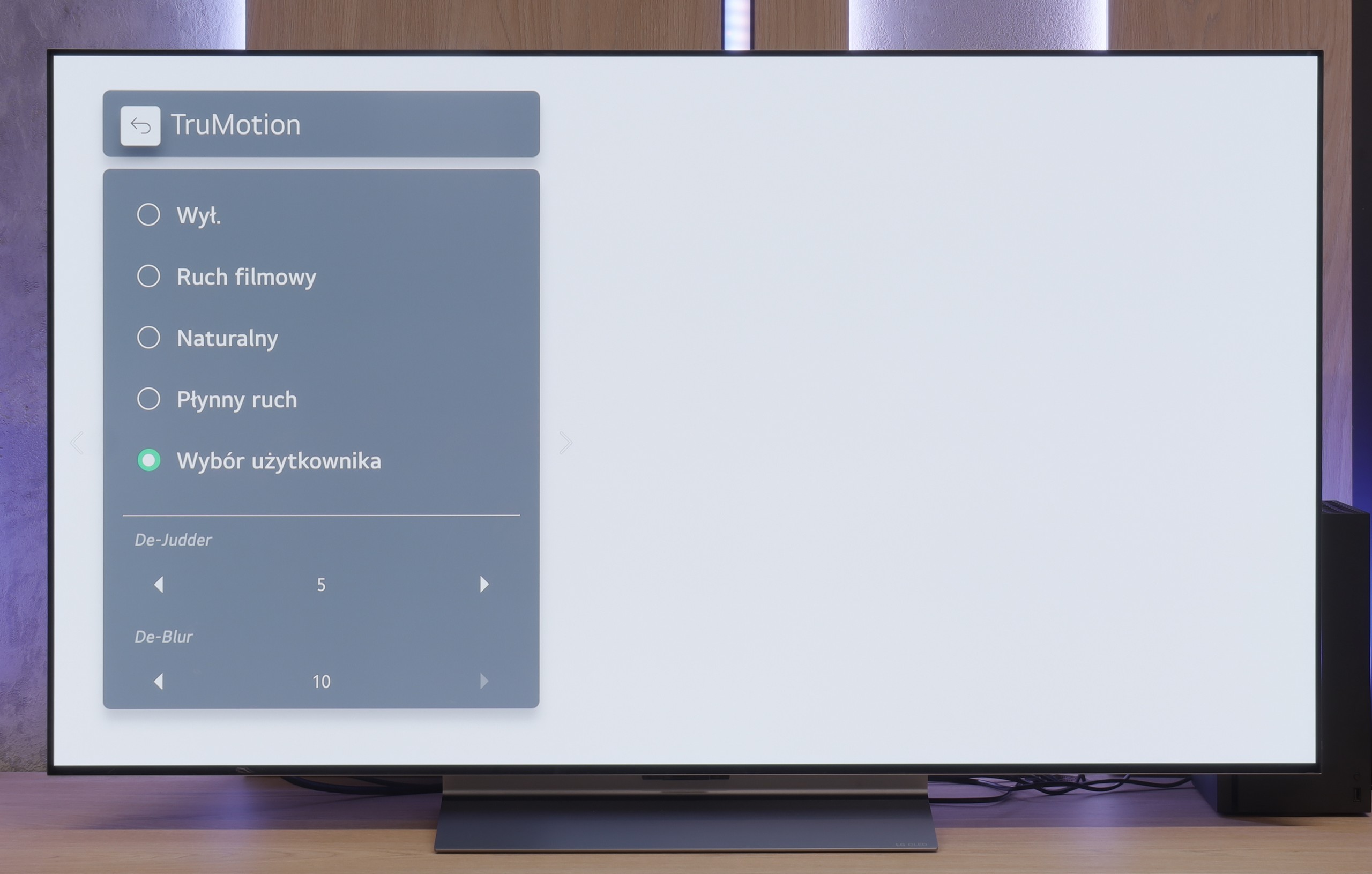
Blur (native resolution, maximum refresh rate):






The Samsung S95D television, equipped with a refresh rate of 120 Hz (and even 144 Hz in the appropriate PC configuration), offers excellent motion smoothness. Samsung provides a variety of image sharpness settings on a ten-point scale, allowing users to adjust the display according to their preferences - whether the image should be more cinematic/frame-like or more theatrical/smooth. In UFO tests, the OLED matrix shows its advantages, eliminating any blurring. The lightning-fast pixel response means that dynamic movements are reproduced with unparalleled precision.
The LG C5 is equipped with a 144 Hz display, and this, combined with the virtually zero response time of the OLED pixels, makes it one of the best screens for watching dynamic content. It doesn't matter whether it's sports, fast-paced games, or just action – the image is razor-sharp.
And what about movies at 24 frames? LG thought of that too. The built-in "TruMotion" smoother allows you to adjust the picture to your own preferences. The "de-judder" slider increases fluidity in films, while "de-blur" gently reduces motion blur – though to be fair, it is nearly invisible here anyway.
Console compatibility and gaming features
9.6/10
10/10
- ALLM
- VRR
- VRR range48 - 144Hz40 - 144Hz
- Dolby Vision Game Mode
- Correct implementation of HGIG
- 1080p@120Hz
- 1440p@120Hz
- 4K@120Hz
- Game bar

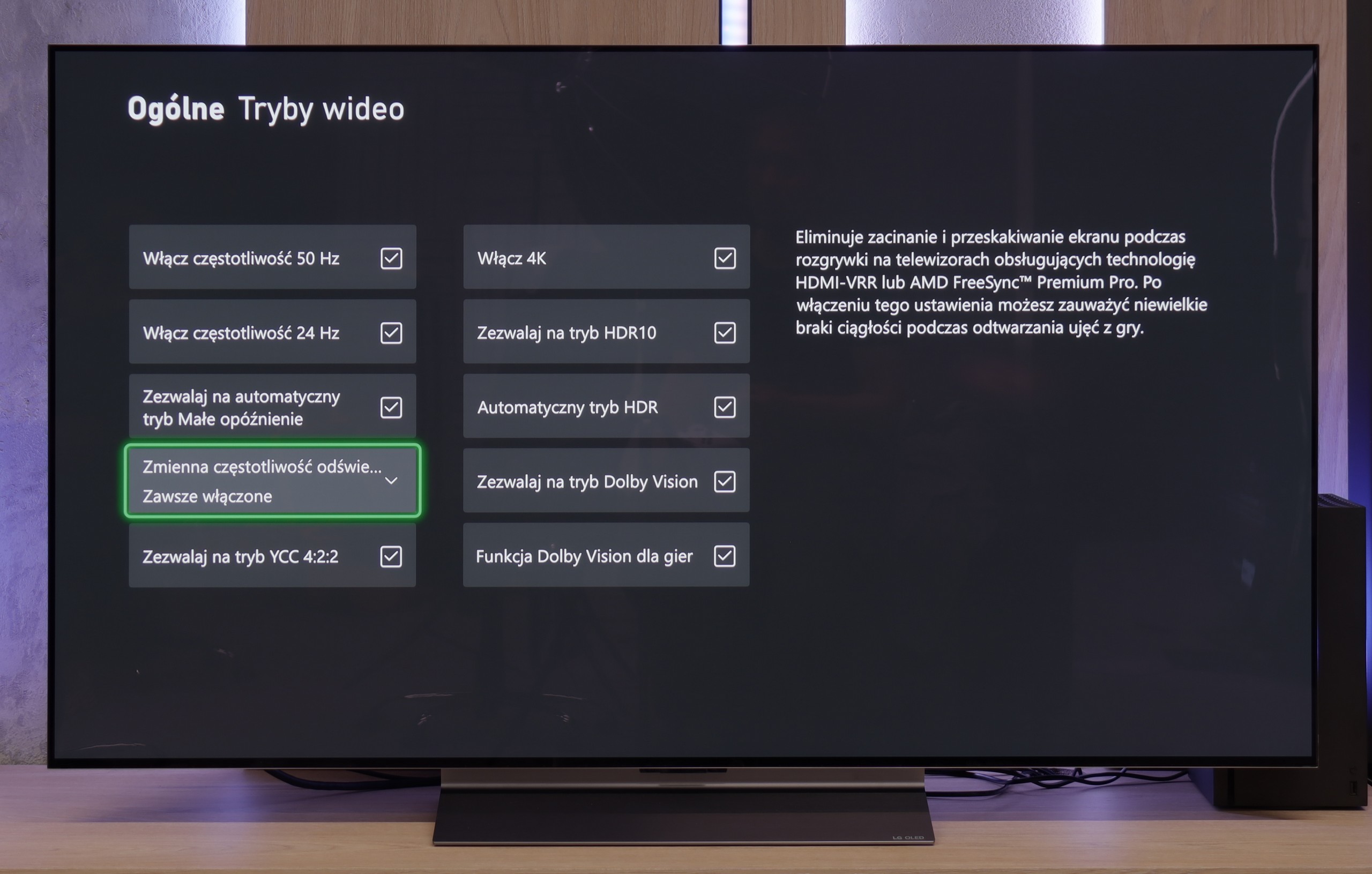

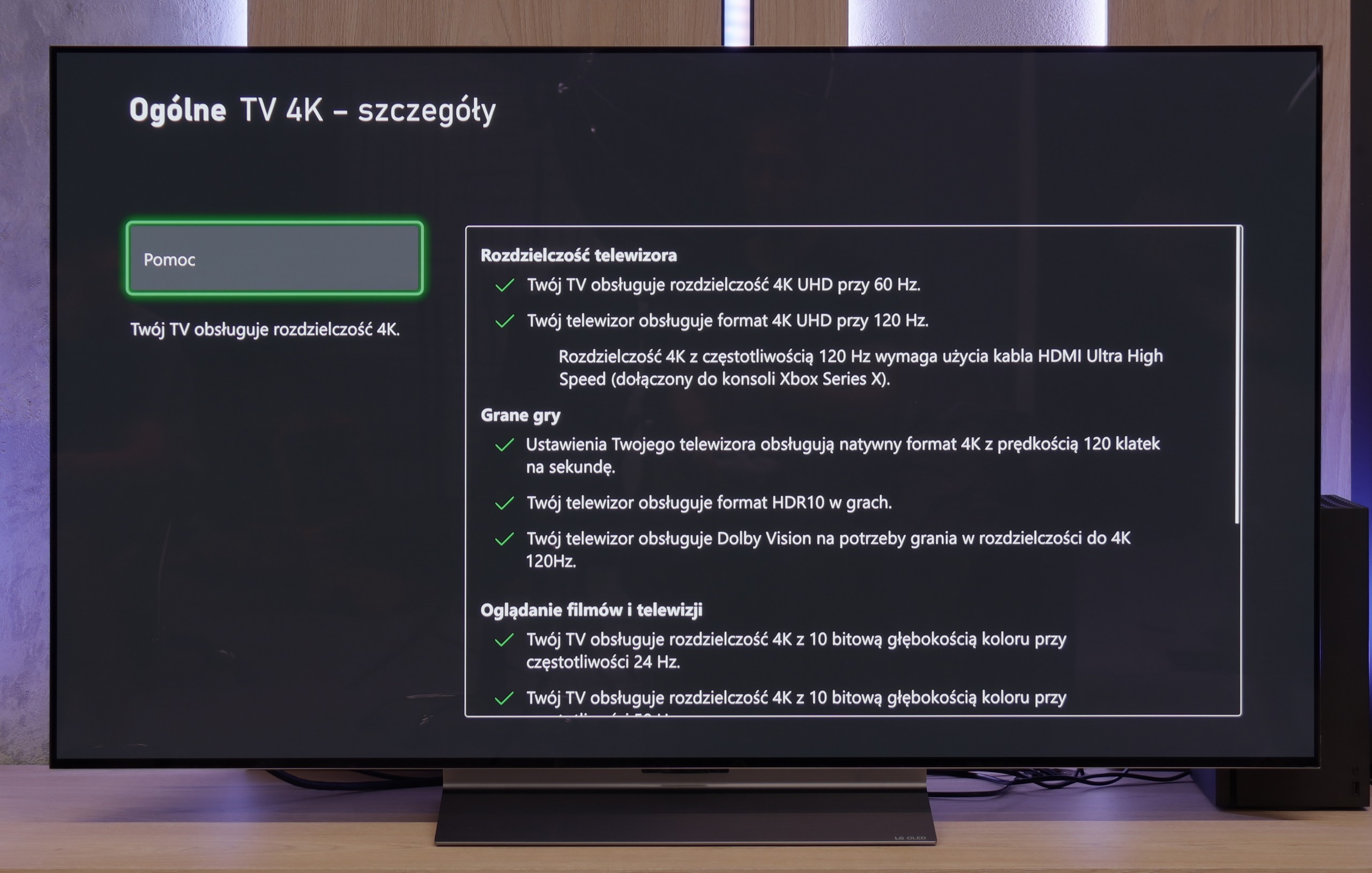

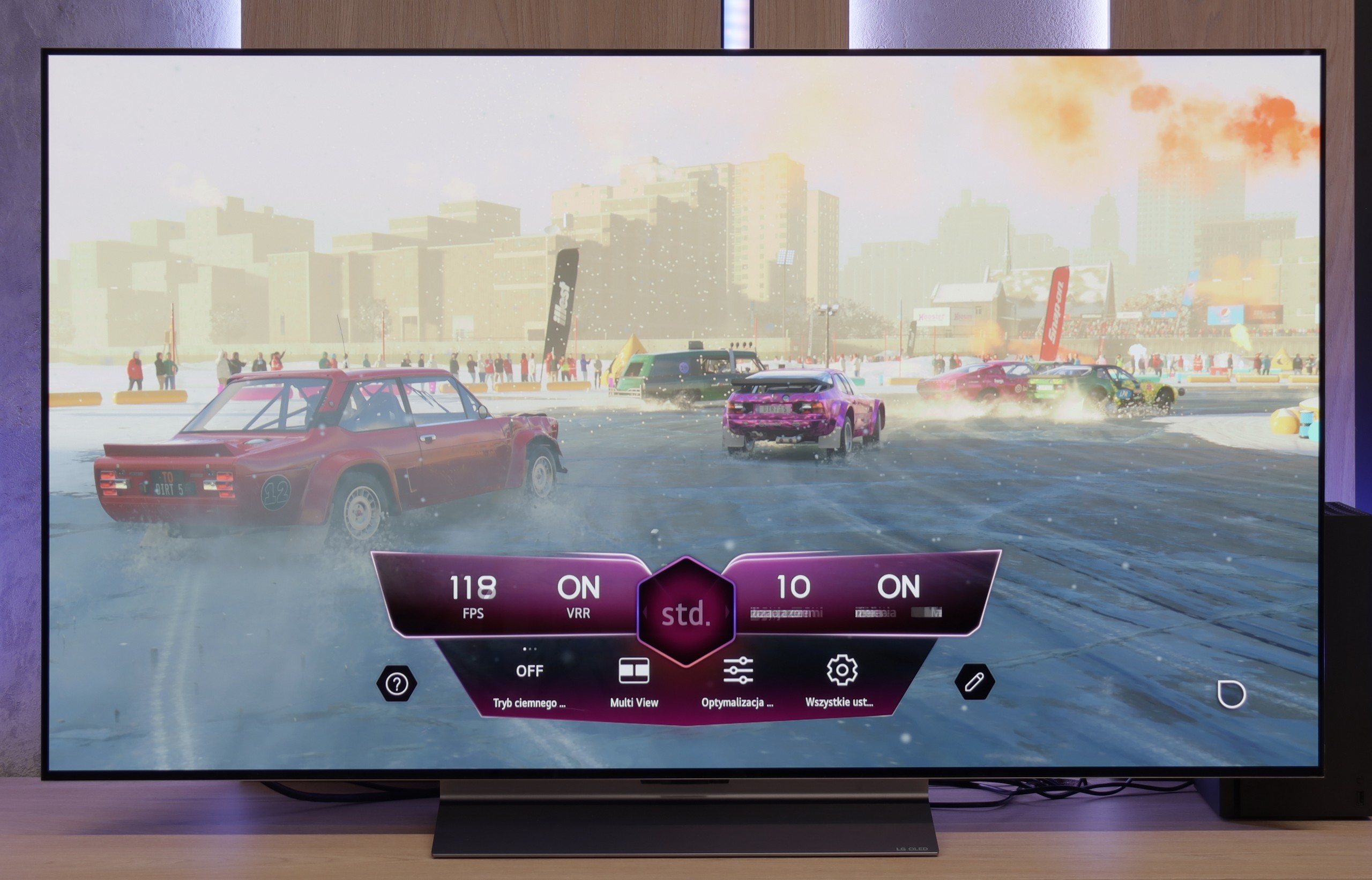

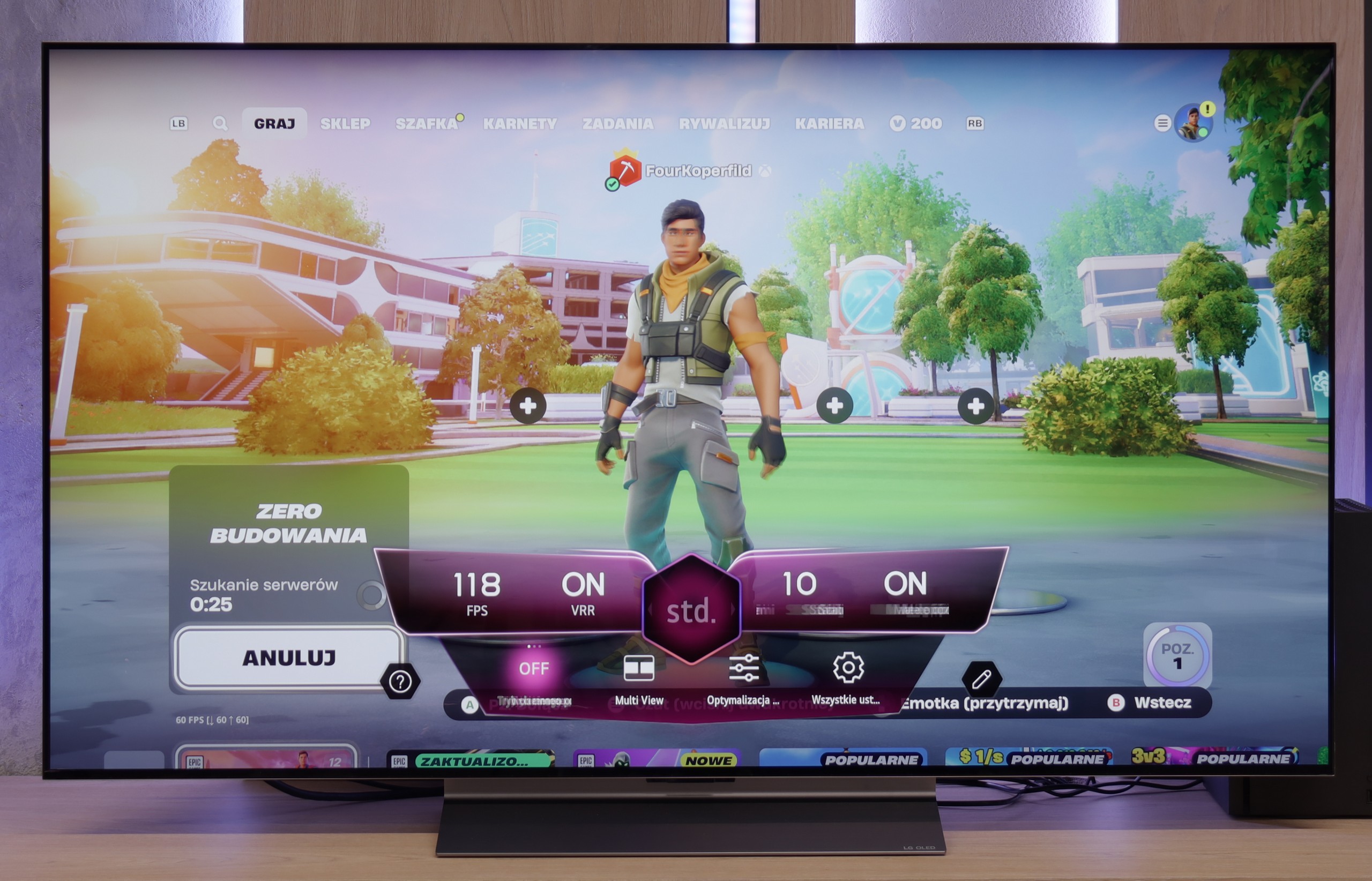
The Samsung S95D TV is perfectly suited to the needs of gamers, offering four HDMI 2.1 ports that support key features such as Auto Low Latency Mode (ALLM), Variable Refresh Rate (VRR), and HDR Gaming Interest Group (HGIG). The HDMI 2.1 ports do not provide full bandwidth of 48Gb, but they are still sufficient for achieving appropriate resolution and smoothness. Thanks to these technologies, gamers can enjoy smoother and more responsive gameplay, which significantly impacts comfort and performance during intense gaming sessions. One of the biggest advantages is the Xbox app, which allows for cloud gaming without the need for a console. Through it, gamers can access a wide range of titles directly on the TV, enjoying high image quality and smooth gameplay. Additionally, the S95D offers a Game Bar feature that enables easy management of game settings, including quick adjustments of parameters such as changing the aspect ratio, which can be extremely useful in various games and gaming modes. It is also worth mentioning the support for G-Sync and FreeSync, which is a huge plus for users of Nvidia and AMD graphics cards. Despite the lack of support for Dolby Vision, the TV still offers excellent features that make it an ideal choice for console gaming enthusiasts. Overall, the S95D combines modern technologies with outstanding picture quality, creating a complete package for any gamer.
LG C5 is a television designed with gamers in mind – and there isn't a hint of exaggeration in that. It's hard to find anything to criticise here. We have a refresh rate of 144 Hz, full support for VRR, ALLM, and as many as four HDMI 2.1 ports with a full bandwidth of 48 Gb/s. For those who have an Xbox, PS5, Nintendo, and a gaming PC all in one room – there are no limitations, everything can be connected without any hassle.
The HDR configuration for games also poses no problems. The television correctly handles the HGiG mode, which allows for an image that matches the creators' intentions. For those interested, there is also Dolby Vision in Gaming mode, although we still recommend HGiG as the most predictable and "pure" version of HDR in games.
It also features Game Bar, which serves as a "command centre" for gamers. Everything important, from VRR settings, to picture modes, to frame rate information – is at our fingertips. The interface is simple and clear. It may look like it’s from a spaceship simulator, but it serves its purpose and just works; as it should.
C5 is truly a complete set for any gamer.
Input lag
10/10
10/10
SDR
HDR
Dolby Vision
The Samsung S95D television stands out with a low input lag of just 5 ms for 120 Hz content and 9 ms for 60 Hz content. These are impressive results that ensure an incredibly smooth gaming experience. If it weren't for our scale limited to 10 points, the S95D would deserve an even higher rating!
The reaction time of the LG C5 to our movements with the controller is exemplary. Regardless of the chosen resolution or frame rate, the delay is so low that in practice it is almost imperceptible. Playing on this television is simply pure pleasure. Some delay is introduced by the Dolby Vision mode, which should come as no surprise – this applies to virtually every television on the market equipped with this mode. Nonetheless, even with Dolby Vision active, the input lag remains low enough that gameplay is still smooth and responsive.
Compatibility with PC
8.6/10
8.6/10

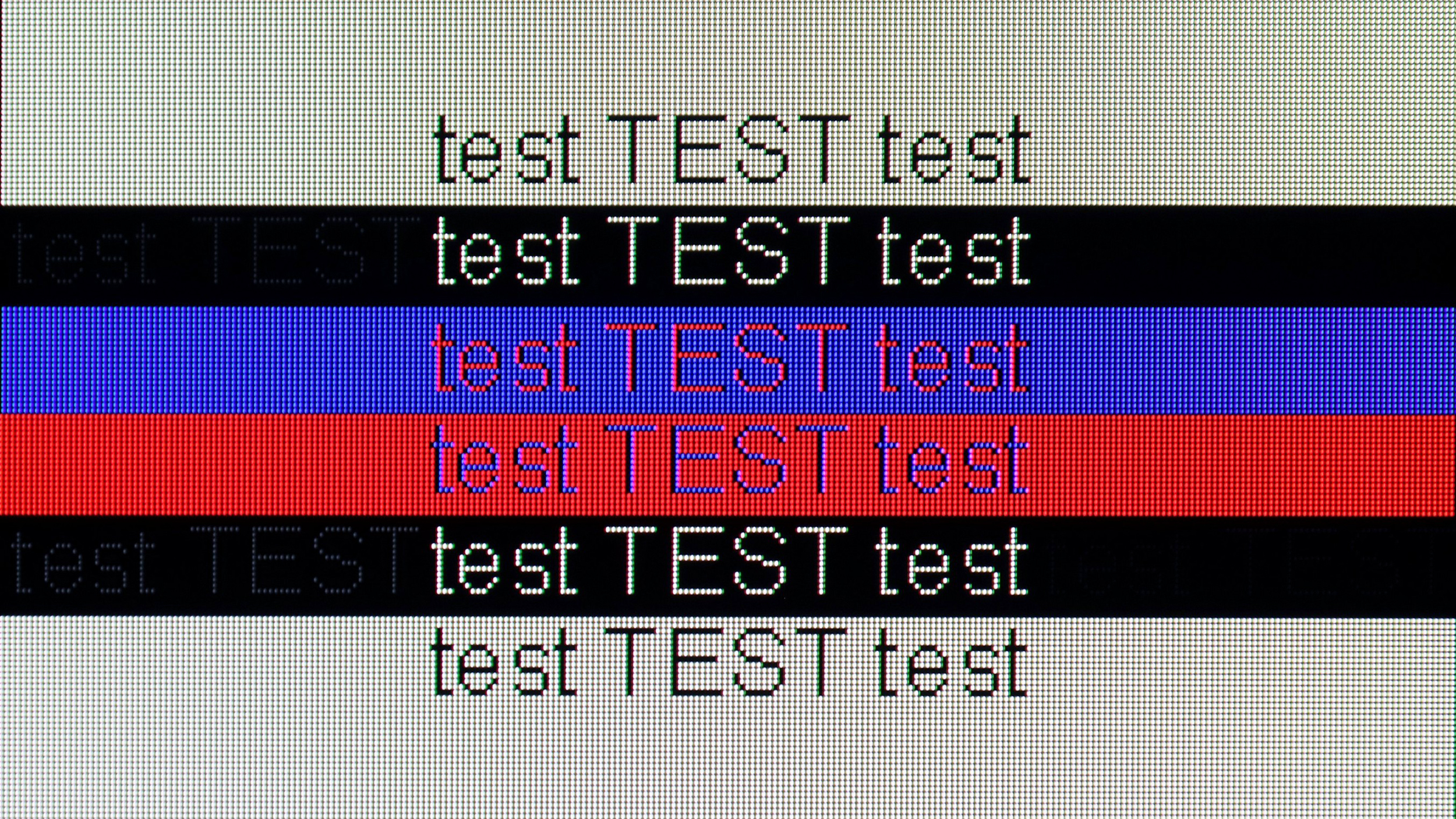
Samsung S95D is truly an excellent choice for use with a computer. With support for chroma 4:4:4, text on the screen is sharp and readable, which is crucial for both work and gaming. When connected to a computer, the input lag of 5 ms ensures outstanding smoothness.
We deducted points due to the sub-pixel arrangement in QD-OLED panels. Nevertheless, the overall user experience is impressive, and the television performs excellently in everyday tasks as well as in more demanding situations.
C5 – as we wrote – is a television created for gamers, so playing even on a computer is a real pleasure. The 144 Hz panel, low input lag, and original G-Sync certification only confirm this.
When it comes to work – it is also very good. Fonts are legible, the interface is clear, but it should be remembered that we are dealing with a WOLED panel and a WRGB subpixel arrangement. (slight shadows visible behind the font). Therefore, if someone plans to place the C5 on a desk in smaller sizes like 42 or 48 inches for everyday office work, it is worth checking this for themselves beforehand. For occasional desktop use and primarily for gaming – there are no reasons for concern.
Viewing angles
9.8/10
7.4/10
The viewing angles on the Samsung S95D are simply perfect—the best we have ever tested. QD-OLED panels in this category are unmatched. Even with the excellent viewing angles offered by standard WOLEDs, QD-OLED definitely leads the way. Regardless of the viewing angle, the picture remains bright, clear, and full of detail, making the Samsung S95D an absolute leader in this field.
The viewing angles on the LG C5 are nearly perfect. Although they fall slightly short compared to technologies such as QD-OLED or WOLED with micro-lens MLA, the picture quality from a large angle still leaves a great impression. Colours remain vibrant, and the screen does not lose much of its brightness even when set at more demanding angles.
Addressing questions that circulated last year regarding the C4 model – we did not notice any green tints, pinking, or other effects in the case of the C5, which can be read about online. The picture at an angle looked really clear.
TV efficiency during daytime
6.2/10
6.2/10

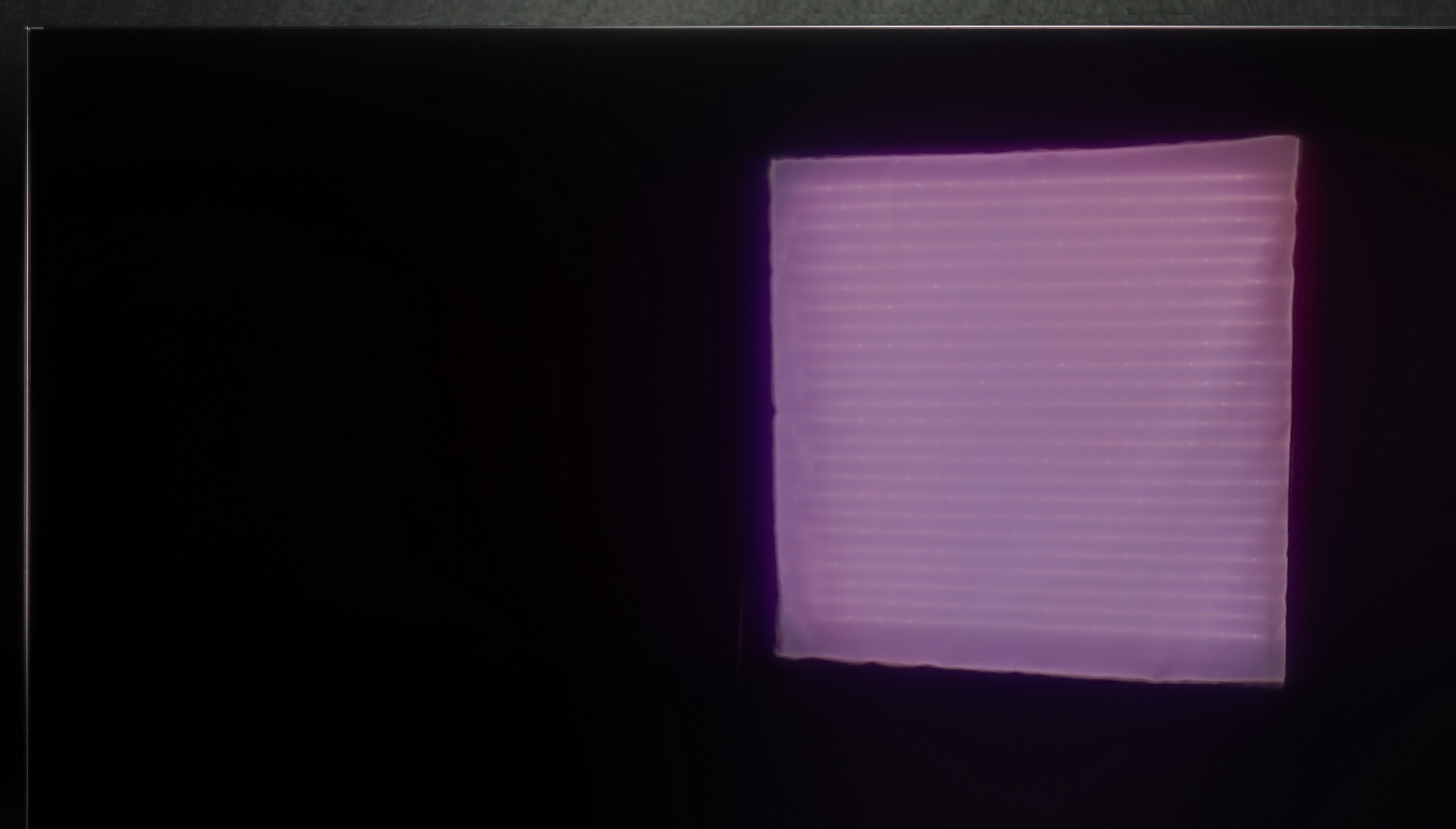

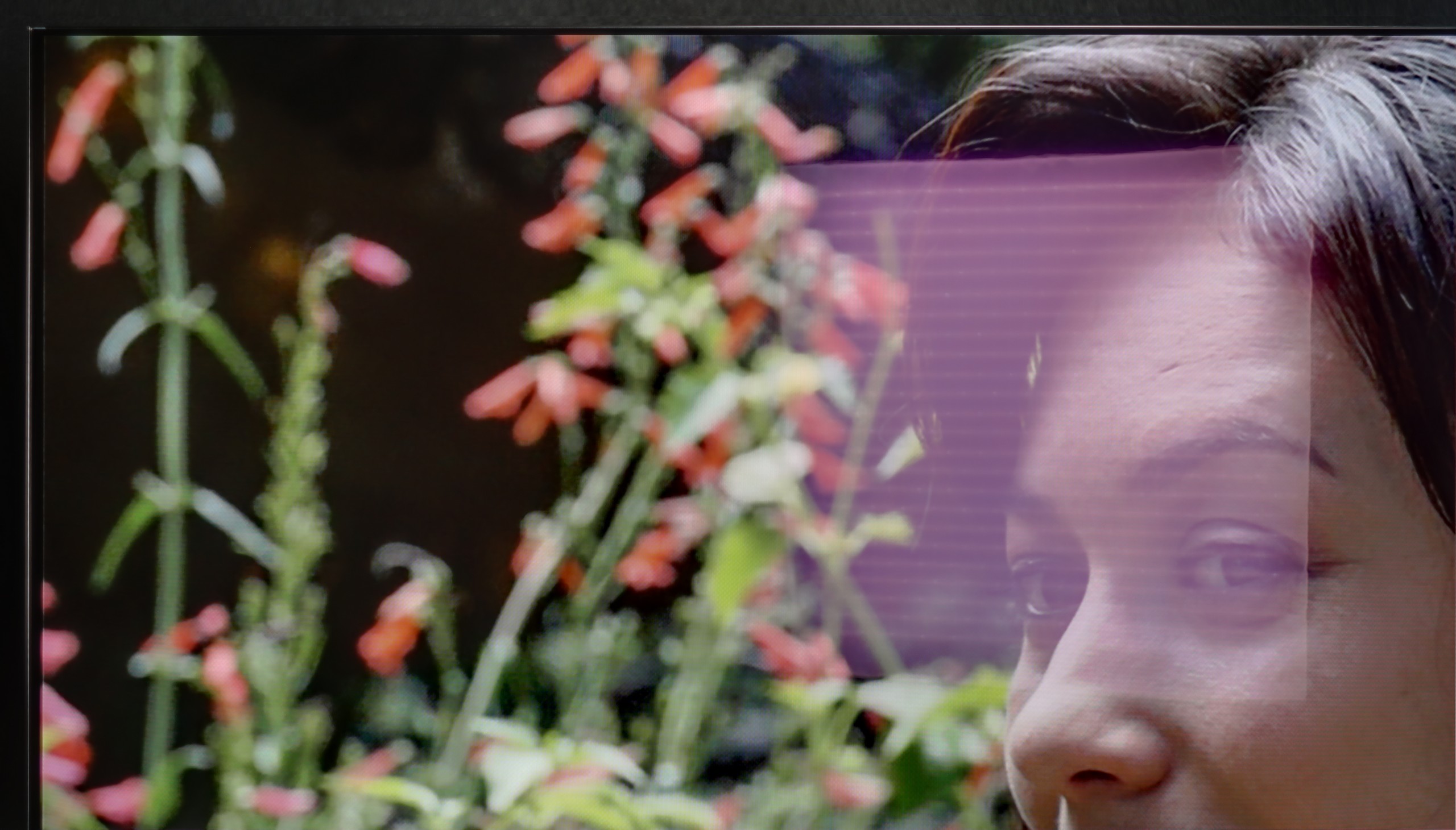
Matrix brightness
Average luminance SDR
LG OLED C5: 435 cd/m2
Samsung OLED S95D: 508 cd/m2
The Samsung S95D television stands out for its exceptional daytime performance, being the only OLED on the market with a matte screen. Thanks to this feature, light reflections are reduced, allowing for comfortable viewing in bright rooms. However, it is worth noting that the matte coating may slightly diminish colour intensity. Despite this minor drawback, the television remains very bright, offering up to 500 nits of brightness. This makes the image clear and vivid even in well-lit spaces, making the S95D a great choice for everyday use.
LG C5 is one of the brighter OLED televisions on the market, so it should perform well in moderately bright rooms without major issues. The average brightness in SDR mode is around 450 nits – a value sufficient to keep the image readable even during the day. Importantly, the black does not lose depth and does not become "grey", which can still be an issue with QD-OLED panels.
A greater challenge, however, may be reflections. The WOLED panel used in the LG C5 has a glossy coating typical of this technology, which only partially diffuses reflections. In a well-lit living room with large windows, you can see your reflection on the screen – slightly muted, but still visible. In a very sunny room, it may turn out that curtains or blinds will be necessary to fully enjoy the great picture quality.
Details about the matrix
Subpixel Structure:

Panel uniformity and thermal imaging:

TV features
7.9/10
7.9/10
- HDMI inputs0 x HDMI 2.0, 4 x HDMI 2.1 40Gbps0 x HDMI 2.0, 4 x HDMI 2.1 48Gbps
- Other inputsToslink (Optical audio)IR (remote)
- OutputseARC (HDMI), ARC (HDMI)Toslink (Optical audio), eARC (HDMI), ARC (HDMI)
- Network InterfacesWi-Fi 2.4GHz, Wi-Fi 5GHz, Ethernet (LAN) 100MbpsWi-Fi 2.4GHz, Wi-Fi 5GHz, Ethernet (LAN) 100Mbps
- TV receptionDVB-T, DVB-T2, DVB-S, DVB-S2, DVB-CDVB-T, DVB-T2, DVB-S, DVB-S2, DVB-C
Classic features:
- Recording to USB (terrestrial TV)
- Recording programming
- Picture in Picture (PiP)
- RF remote control (no need to aim at the screen)
- Backlit remote control
- Teletext
- Audio only mode
- Bluetooth headphones support
- Simultaneous Bluetooth headphones & TV audio
Smart features:
- AirPlay
- Screen mirroring (Windows Miracast)
- Voice search
- Voice search in native language
- Ability to connect a keyboard and mouse


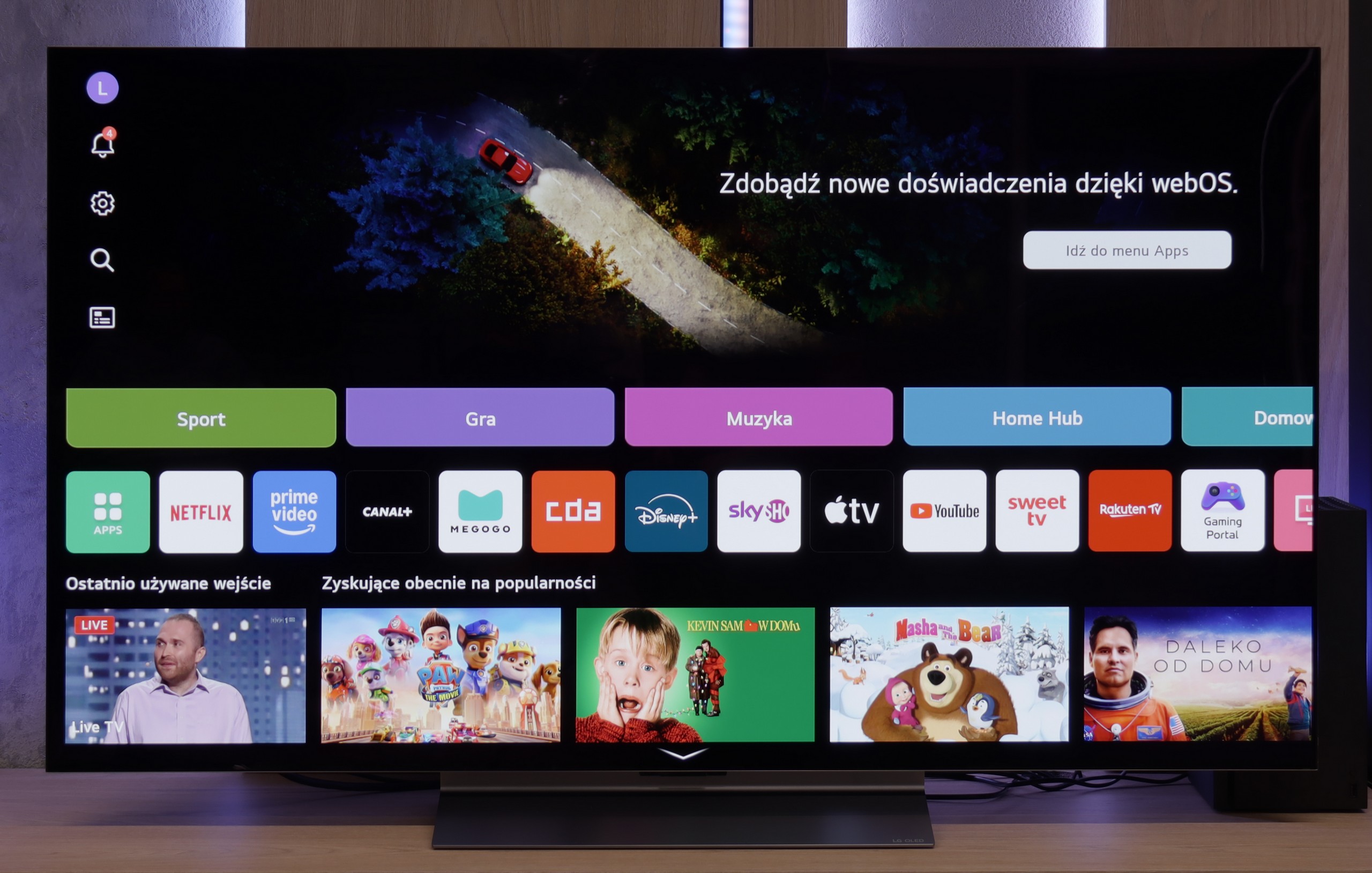
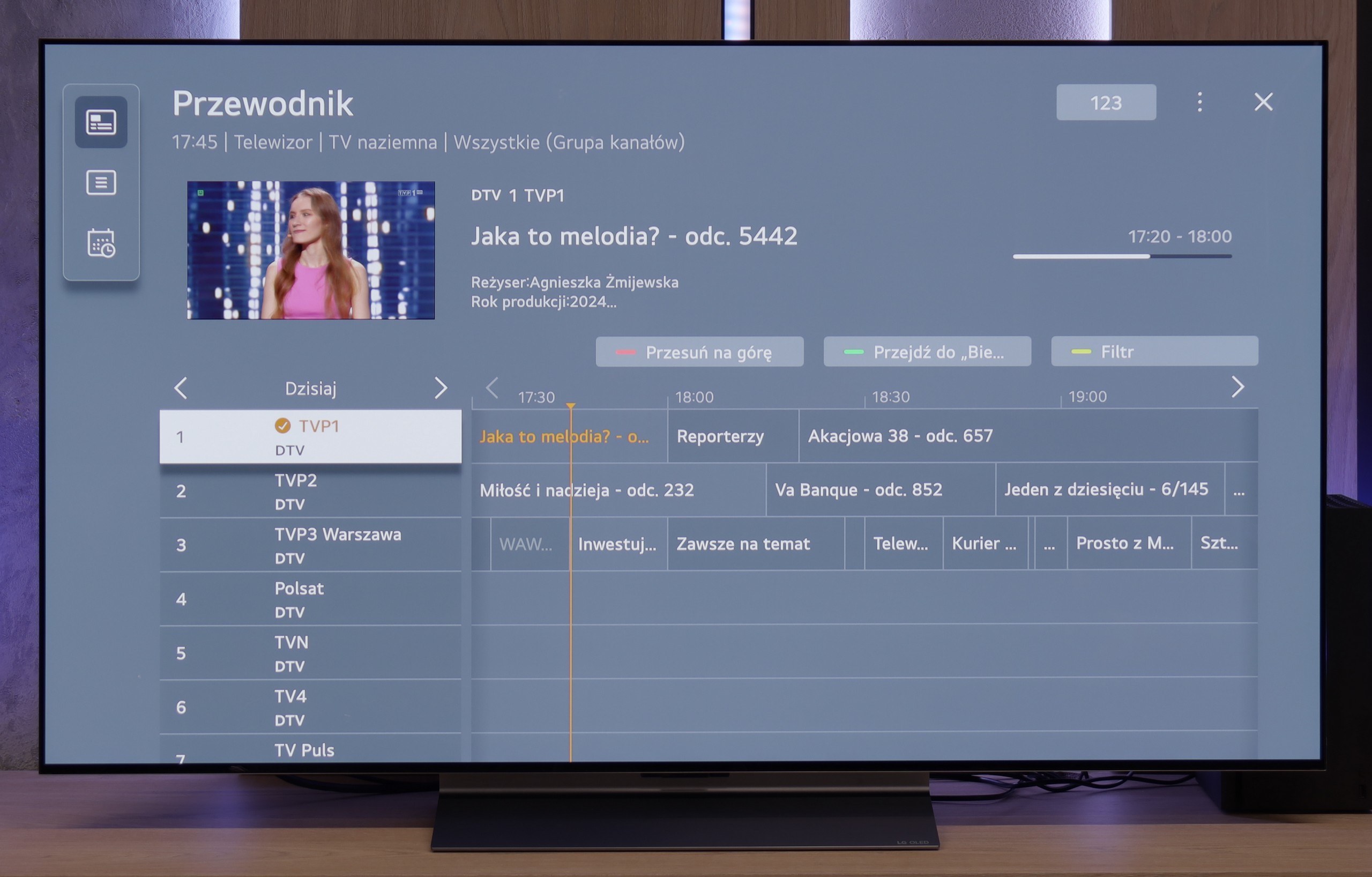
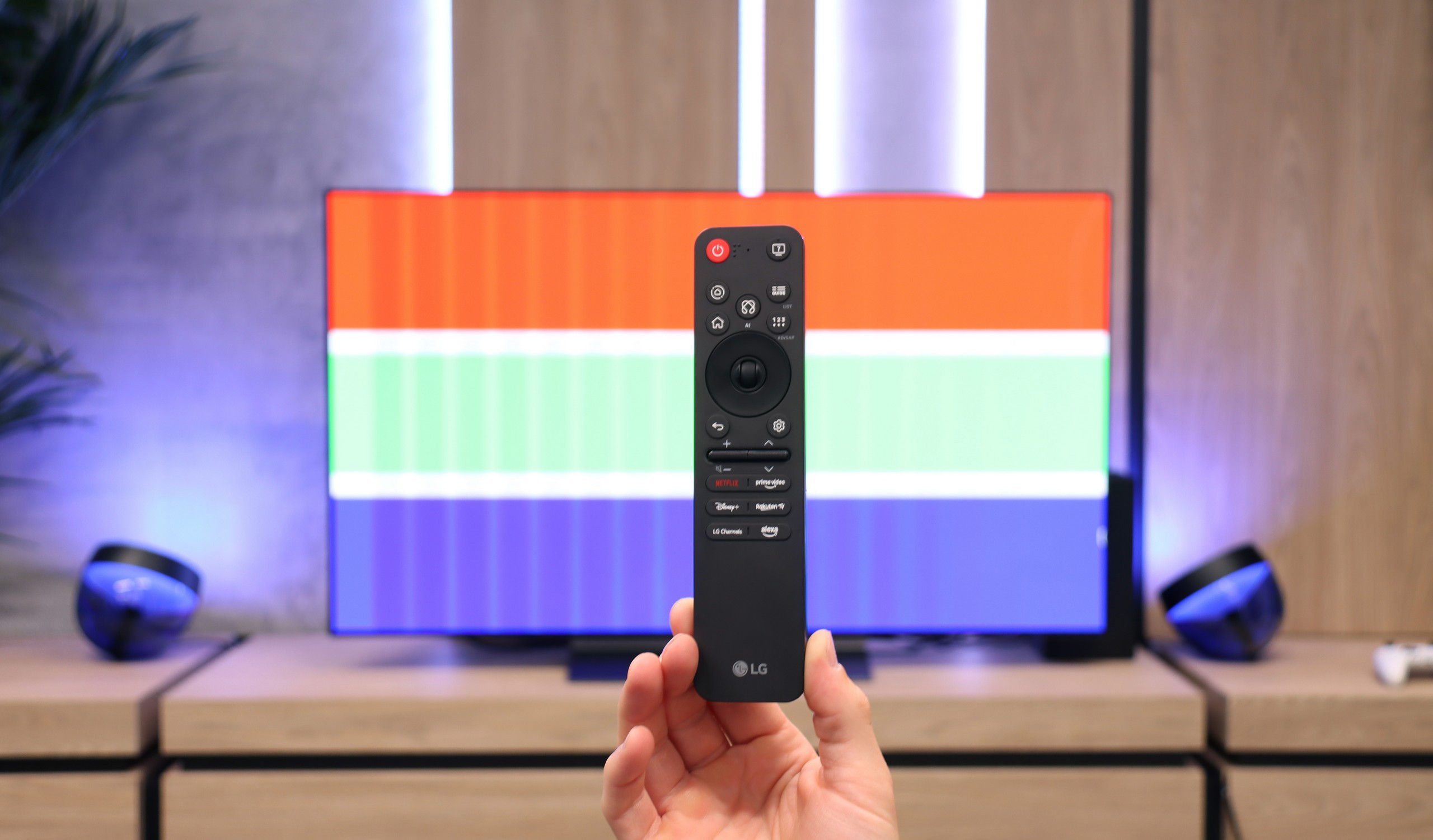
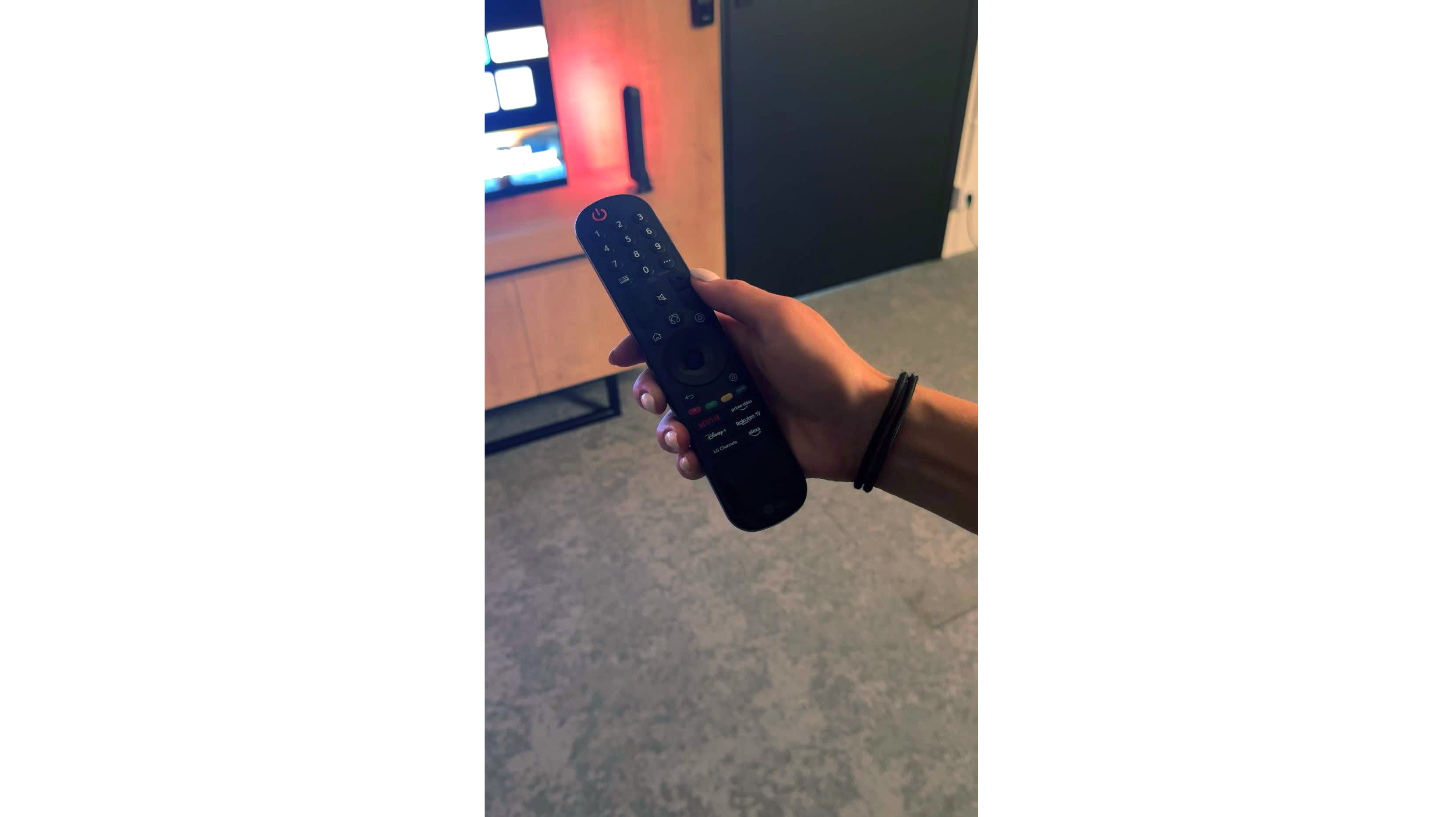
The Samsung S95D television offers a range of features that significantly enhance user comfort, making it an ideal device for entertainment in the privacy of one's home. The Tizen system, on which this model is based, is a modern and advanced platform that provides an intuitive and smooth experience. Thanks to its user-friendly interface, navigation through applications and settings is quick and straightforward, making it easy for even those less familiar with technology to use the television. Tizen supports a rich set of applications, including all popular streaming services such as Netflix, YouTube, and Amazon Prime Video. A new feature for 2024 is the availability of voice search in Polish. Additionally, the television supports AirPlay, allowing for easy content sharing from Apple devices like iPhone or iPad. It is worth noting that the S95D television works with the SmartThings app, which enables integration with other smart devices in the home. This app allows for automation creation and monitoring of household equipment, making the television not only an entertainment device but also a smart home management centre.
It is also worth mentioning the included accessories, including an eco-friendly solar remote control, which is not only environmentally friendly but also practical for everyday use. This remote can operate multiple devices connected to the television, eliminating the need to use several different remotes - it easily integrates with other set-top boxes such as Canal+ / NC+. Additionally, the One Connect module in the Samsung S95D is an excellent solution that makes the television extremely slim. With this device, all cables and connections can be concealed. It is one of the sleekest devices that can be mounted on a wall, providing an aesthetic and modern look to the interior. If we want to place the device on a very sturdy metal stand, we need not worry. This module can be mounted at the back of the stand, creating a harmonious whole.
The only drawback that can be pointed out is the lack of USB recording support. For some users, this might be a limitation. Nevertheless, the Samsung S95D television offers many advanced features and technologies, making it an excellent choice for anyone looking for high-quality entertainment in their home.
Classic TV functions:
In terms of classic television functions, the LG C5 performs really well. Here we have the ability to record programmes to USB from built-in DVB-T(2) tuners, teletext support, an EPG programme list, as well as seamless pairing of headphones via Bluetooth. For many users, these are still very important elements of daily TV use – and here LG doesn’t lack anything except for the PIP function. It is also worth noting the remote control, or rather... the different versions of the remote. In our test, we used the C54 model, which is equipped with the new version of the Magic remote. It resembles Samsung's minimalist approach – there is no numeric keypad or "source" button, but it looks modern and is comfortable for daily use. On the other hand, other variants, such as C5ELB, may be sold with an older version of the remote – a more classic one, with more buttons and a numeric keypad. Some will find it more practical, while others will consider it outdated. In short: quite a bit of confusion, so it's worth checking the model suffix before making a purchase.
Smart TV:
Regardless of the remote's version, we operate the same system – WebOS. This is one of the most enjoyable solutions in the Smart TV world. An intuitive menu, quick operation, and support for popular features such as AirPlay, screen mirroring, and voice assistant make the system perform very well on a daily basis. Additionally, cursor control via the gyroscope in the Magic remote remains one of the most convenient forms of navigation in televisions. There are really many applications available – Netflix, Disney+, HBO Max, Apple TV, and many others. However, it should be noted that this is not a system based on Android/Google TV, so it might happen that we simply won’t find some less popular application in the LG store.
Playing files from USB
8.8/10
8.8/10
Supported photo formats:
Maximum photo resolution:

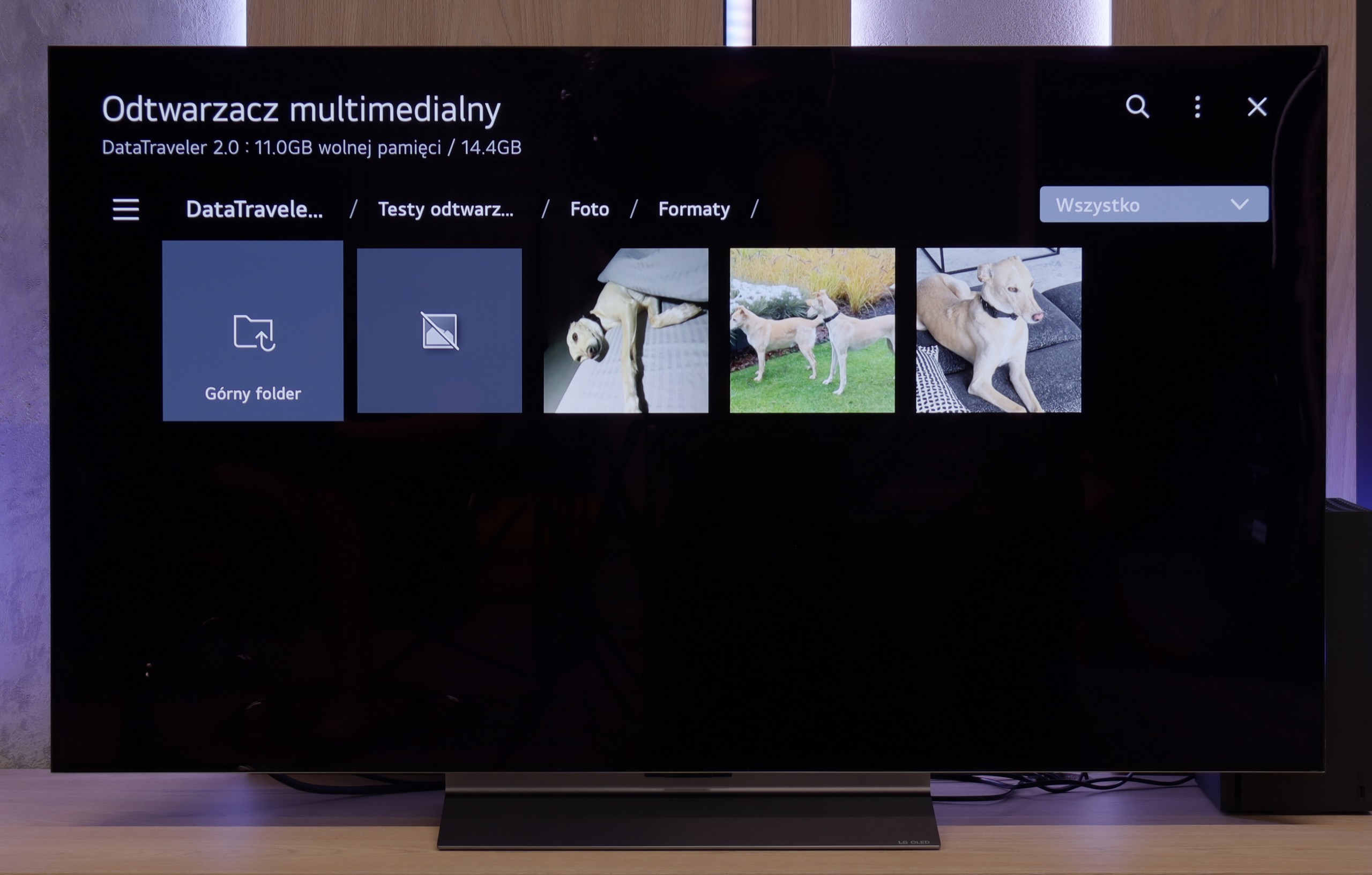
Samsung S95D stands out with an excellent built-in player that handles most video and audio files we tested without any issues. The exceptions are files in Dolby Vision format and some less common codecs. The player supports Polish characters and allows for font colour adjustment, which is a big plus.
The LG C5 is equipped with quite a decent built-in media player, which should meet the expectations of most users. It supports popular video and audio formats, handles subtitles in SRT format, and opens most graphic files without major issues.
The interface itself is fairly simple and intuitive – it doesn't surprise, but it also doesn't cause difficulties in daily use. Of course, it's not on the level of external players or applications from Google TV, but for basic playback of films from a pen drive or hard drive – it is more than adequate.
Apps
8.7/10
9.1/10














































Sound
7.9/10
7.2/10
- Maximum volume84dB84dB
- Dolby Digital Plus 7.1
- Dolby True HD 7.1
- Dolby Atmos in Dolby Digital Plus (JOC)
- Dolby Atmos in Dolby True HD
- DTS:X in DTS-HD MA
- DTS-HD Master Audio
Although the Samsung S95D is one of the sleekest televisions on the market, it offers quite pleasing sound. The television supports Dolby codecs, which allows for high-quality audio enjoyment. However, a downside is the lack of support for DTS, which may be a limitation for some users who use external players. Nevertheless, the overall sound quality remains satisfactory, especially for such a slim device. With advanced Dolby Atmos technology, users can enjoy immersive, three-dimensional sound that perfectly complements the high picture quality.
For such a slim television, the LG C5 surprises with quite good sound quality. Within its thin casing, a set of specific speakers has been incorporated, which produce clear sound, with well audible details and – surprisingly – a light yet noticeable bass. It is more than sufficient for everyday viewing, and in many cases, it might even offer a pleasant surprise. It is a pity that this year LG decided to completely eliminate support for DTS codecs. For most people, this will not be a problem, but if someone uses Blu-ray discs and enjoys this format – especially in its more advanced versions – they may feel its absence. In such a case, an external amplifier or soundbar with appropriate audio support remains the option.
Acoustic Measurements
No acoustic data
84dBC (Max)
75dBC


